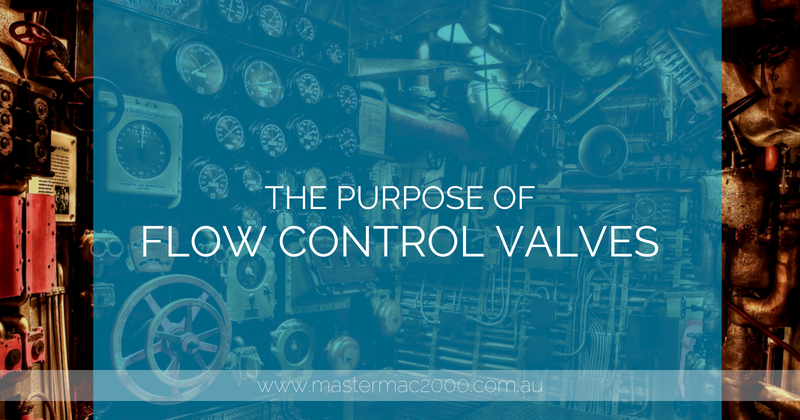The Purpose of Flow Control Valves

Flow control valves are designed to be used in pneumatic systems and sophisticated hydraulics. The valves include simple openings to advanced closed-loop electrohydraulic valves that adjust automatically when dealing with temperature and pressure. The main purpose of the valve in the hydraulic system is to regulate speed effectively.
These valves control the speed of the actuator by regulating the flow rate. Flow rate indicates the rate of energy that is transferred with any given pressure. Actuator speed determines the energy rate of transfer and speed is responsible for flow rate. Directional control valves, don’t deal with energy control but it directs the energy transfer at the place in the system and at the right time.
Flow Control Valves in Hydraulic Circuits
Orifices. They are the most primary method in controlling flow. The orifice is placed in series with the pump when used in controlling flow. It can be a drilled hole in the fitting.
Flow Regulators. They are more sophisticated compared to orifices. They have compensating abilities that provide closer control of the rate of flow under pressure conditions. The control accuracy can be 5% lesser with calibrated valves that operate in a given flow rate.
Bypass Flow Regulators. They flow in excess of flow rate comes back to the tank through a bypass port in this flow regulator. The flow rate is controlled effectively by throttling fluid across an orifice that is regulated by a compensator piston. Using a bypass regulator is more effective compared to a standard flow regulator.
Demand-compensated Flow Controls. With this, fluid is routed at an administered flow rate to the primary circuit. The bypass fluid can be used in specific functions for secondary circuits without affecting the first one. For this type of valve, there must be flow to the primary circuit.
Pressure-compensated, Variable Flow Valves. This type of flow control valve is equipped with an adjustable orifice that is placed in series with a compensator. The compensator automatically adjusts to different load and inlet pressures. These are available with integral overload relief valves and integral reverse-flow check valves.
Deceleration Valves. This type of valve is modified spring-offset, 2 way and cam-actuated valve that is used for decelerating a load controlled by a cylinder. A cam is attached to a cylinder load or rod that closes the valve slowly.
These are some of the types of flow control valves that are commonly used in hydraulic circuits. Understanding their functions and purpose will provide you with the knowledge of using them effectively.

About MasterMac2000: Your Trusted Pneumatic & Process Automation Partner.
LEADING THE INDUSTRY: Established in 1989, MasterMac2000 has grown to become one of Australia's largest privately owned pneumatic and process automation companies. We stock top-quality brands like Univer, Mack, Tolomatic, Mac, Piab, American, and Rotoflux in Brisbane.
SERVING QLD & NORTHERN NSW: We proudly service Queensland and Northern New South Wales for all your pneumatic and process equipment needs. Our mission is to provide the best pre and post-sales support while actively expanding our client base.
SOURCING HARD-TO-FIND PARTS: Not only do we stock quality components, but we also excel at sourcing those elusive, hard-to-find parts. With our extensive database and global network of contacts, getting the parts you require is as easy as a call to our highly skilled, professional sales team.
DEDICATED TO YOUR SUCCESS:
- Decades of expertise in pneumatics & process automation
- Carefully curated selection of world-class brands
- Exceptional sourcing capabilities for speciality parts
- Knowledgeable sales staff dedicated to finding solutions
- Unwavering commitment to customer service excellence
About The Author
Stuart Havill
Stuart Havill is the owner and manager of MasterMac2000, Queensland's largest privately owned pneumatic and process valve company.
With his early working career as a maintenance fitter for Boral in 1992, Stuart has spent his life in the field of pneumatics and process equipment. He gained extensive experience in plant design, maintenance, repairs, fabrication, and site management.
In 1996, he transitioned to a pneumatic sales technician role at MasterMac2000, where he excelled in key account management, providing cost-effective solutions, and managing a sales team of 9 employees.
Since 2002, Stuart has been the manager at MasterMac2000, overseeing the company's growth and establishing it as a leader in pneumatic automation and process valve engineering. His expertise spans customer training, CRM setup, industrial compressor sizing and installation, and turn-key project management.
Under Stuart's leadership, MasterMac2000 has been servicing the industry since 1988, with 5 full-time sales representatives covering northern rivers NSW, Queensland, Northern Territory, and PNG. The company prides itself on providing the best-priced solutions to all customers in the marketplace.
View Stuart’s LinkedIn profile to learn more about his expertise in pneumatics and process equipment.